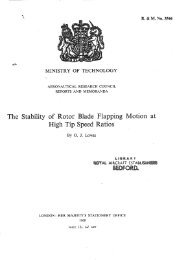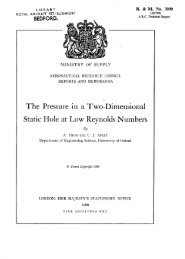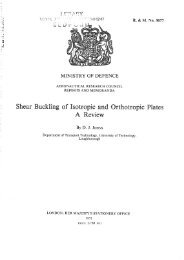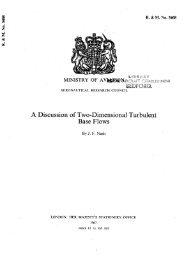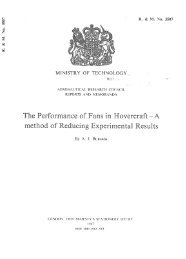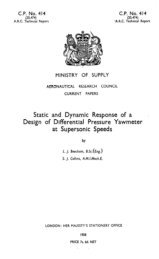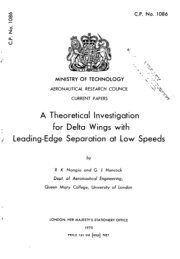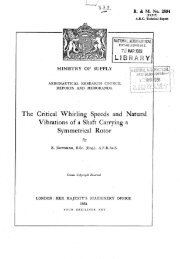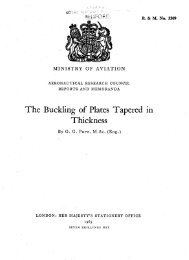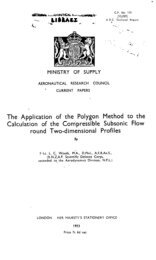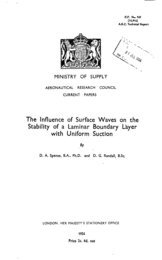Fatigue behaviour of BS 2L65 aluminium alloy pin - aerade
Fatigue behaviour of BS 2L65 aluminium alloy pin - aerade
Fatigue behaviour of BS 2L65 aluminium alloy pin - aerade
You also want an ePaper? Increase the reach of your titles
YUMPU automatically turns print PDFs into web optimized ePapers that Google loves.
14<br />
increase in endurance <strong>of</strong> 160%. As there was a greater reduction in mean stress<br />
for the case <strong>of</strong> the bushed lug, an equal, if not greater effect on life would be<br />
anticipated which would more than <strong>of</strong>fset the effect <strong>of</strong> the increase in stress<br />
range. As the fatigue tests showed a reduction in life following a prestress,<br />
this cannot be attributed to the change in local stress conditions described<br />
above. Other possible explanations include:<br />
(i) An increase in fretting damage caused by a relief in radial stress.<br />
(ii) The presence <strong>of</strong> very high stress gradients such that the strain gauge was<br />
not responding to the true local stress situation.<br />
Both these points are currently being investigated using the Moir~ Fringe<br />
Method. This will give the in-plane surface strains on the lug following bush<br />
insertion and will study the effect <strong>of</strong> several values <strong>of</strong> preload.<br />
4.4 ~erformance <strong>of</strong> bushed l~ under narrow band random loading "<br />
The performance <strong>of</strong> bushed and unbushed lugs was also compared under NBR<br />
loading at different mean stresses. It should be noted that the use <strong>of</strong> a<br />
resonant machine for this evaluation is not entirely satisfactory because for a<br />
given level <strong>of</strong> alternating stress, the amplitude distribution tends to vary with<br />
mean stress and specimen type. This is due to the large change in stiffness <strong>of</strong><br />
the double <strong>pin</strong>ned lug as the load passes through zero during large negative-going<br />
amplitudes, resulting in truncation <strong>of</strong> the largest amplitudes, and it follows<br />
that truncation <strong>of</strong> the high alternating stresses will be more pronounced for low<br />
values <strong>of</strong> mean stress.<br />
Fig 13 indicates that whereas there is only a very small effect <strong>of</strong> mean<br />
stress on unbushed lugs, there is a pronounced effect on bushed lugs; this is<br />
similar to the results under constant amplitude loadingo However, the question<br />
<strong>of</strong> relative sensitivity <strong>of</strong> constant amplitude and NBR performance to mean stress<br />
level is more accurately examined by studying life predictions based on load<br />
spectra which were actually achieved, and using the appropriate constant amplitude<br />
data.<br />
As outlined in section 2.3, Miner's Rule was used to estimate the endurances<br />
<strong>of</strong> the lugs. The predictions for the bushed lugs are plotted along with the<br />
achieved performances in ~j~ 1~and 15. These results were used to plot Fig 16,<br />
! achieved life l<br />
which presents values <strong>of</strong> L = predicted life'~ uncer all conditions. It<br />
will be noted that under most conditions Miner's Rule using nominal stresses was



